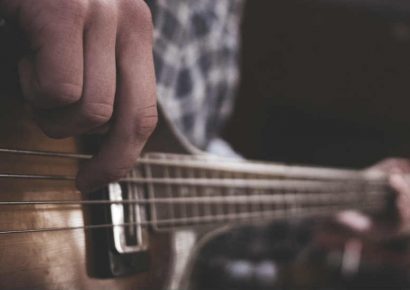Figure A is a four bar phrase in the key of A minor. Written without bends it consists of quavers and two minims and could be played with a range of picking options (alternate picking, downstrokes and even some sweeps). This could work as a rock, fusion lick played over a medium tempo straight rock/funk groove.
To then add some articulation Figure B takes the same lick and incorporates bends. Starting on the same B note the second and third notes of the phrase utilise bends. The second (C) is played by bending the previous note (B) up a semitone. You then release that bend back down a semitone to its original pitch (B) for the third note. This creates a smooth sound allowing the bend to move the pitch rather than fretting separate notes. You could then pull off to the A in the 5th fret before completing the rest of the bar. Bar two uses a traditional whole tone bend from D in the 5th fret on the 3rd string. This bend is held for two beats before being released to its original pitch (D) on beat four. Bar three is entirely fretted notes and could incorporate various picking depending on your preference and ability.
Finally the last bar again uses a bend and release for the first three notes of the phrase. This time it starts on D in the 10th fret on the first string, bends up a tone to E and then releases back to D. Including the C on beat 2+ the aim is to have the four quavers sounding even and in tune with the bend. These four notes should be clear and sound like the last bar in Figure A (played as all fretted notes, no bends). Lastly this lick finishes with a whole tone bend from G in the 15th fret on the first string up to A. This is written as bending the note quickly to the desired pitch (A) and then holding it for a minim. To vary the articulation you could of course go for a slow bend though and take the two beats to gradually move towards A.
Now with some bend and release knowledge let’s leave you with Figure C to work on yourself. It’s an E minor pentatonic sound that could work over E7 or Em7 (amongst others). Remember to be accurate with the pitch, use reinforcement from your second finger when bending with your third finger and work towards a clear and concise sound. We’ll take bends a step further next issue with some pre bends, more interesting intervals and a quick look at bending multiple notes at once.
Revisit last month’s lesson on bends again here.










